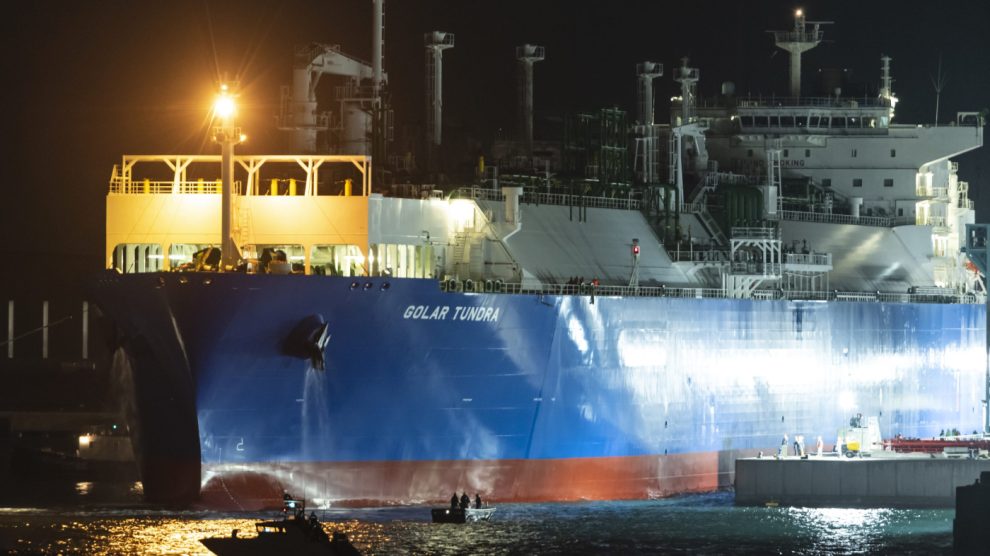Permission to dock. On Sunday night, the Golar Tundra finally arrived in the port of Piombino, where it will help Italy diversify further away from Russian gas. The $350 million floating regasification unit (FRSU), bought by Italian energy company Snam in 2022, can regasify up to 5 billion cubic metres of liquefied gas (LNG) per year.
- This new LNG terminal, Italy’s fourth overall, will only be fully operational in May, upon completion of the connections with the national grid’s methane pipeline hub.
Not so Russian anymore. Another Snam-operated FRSU, BW Singapore, is expected to dock in the Adriatic port of Ravenna and become operational in 2024. Together, the two FRSUs are projected to convey 13% of Italy’s gas needs. That’s on top of increased supplies via gas duct from non-Russian sources, thanks to the energy security push initiated by former Prime Minister Mario Draghi and continued under his successor Giorgia Meloni.
- Enterprise Minister Adolfo Urso said that these efforts are on track to allow Italy “to free itself completely from dependence on Russian gas by the end of this year.” When the second FRSU becomes operational, he explained, “we will completely zero our dependence.”
- Russian gas amounted to 40% of Italy’s imports in 2021; it was slashed to 16% in 2022.
- “With these ships, we will complete our autonomy, also thanks to the agreements made with Algeria,” as well as “the doubling of the TAP gas duct from Azerbaijan,” the reopening “of the historic gas pipeline from Libya,” and the gas “that will be able to arrive from the eastern Mediterranean.”
In the CEO’s own words. “Italy was one of the first countries to take action to secure alternative resources to Russian gas. Thanks to the extraordinary work of our Snam team, our partners, the police and all the relevant authorities, we safely completed the mooring manoeuvres last night,” rejoiced Stefano Venier, head of Snam
- “As of today, activities are continuing in line with the pre-established deadlines, which target the first gas arrivals for mid-May. This is just one stage in the work that is still ahead of us, but it marks a real step in the history of Snam and in the reconstruction of the country’s energy security.”
How it works. Golar Tundra is equipped with four LNG storage tanks, amounting to a storage capacity of approximately 170,000 cubic metres of LNG – and a continuous regasification capacity of 5 billion cubic metres per year.
- The FRSU will be regularly refuelled by incoming LNG carriers, which will transfer the liquefied gas (at a temperature of -160°C) into the terminal’s tanks via unloading arms installed on the FSRU.
- Subsequently, that LNG is regasified by injecting it into a heat exchanger. The room-temperature gas obtained from the regasification process is then compressed and fed into a pipeline to the national network, currently under completion.





